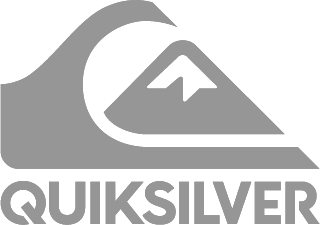Tech Talk: Running Shoe Glossary
by Jim O'Leary on Jul 14, 2020
One of our favorite things about running is how simple it is. Just lace up your running shoes, head out the door, and BOOM! You’re running.
Unfortunately, while running is simple, talking about it isn’t. From specialized terms that don’t always mean what you think they mean, to ultra-specific names for parts of your foot that you may not have known have names, running has a vocabulary all its own. And until you know that vocab, navigating the world of online running can be kind of confusing. But Peter Glenn is here to help you in two big ways.
First, it’s our service. If you stop by one of our stores, you’ll quickly find an associate eager to help you pick the perfect gear for your running goals, helping you understand what will work best for you and why. But if you can’t just stop by, we’ve put together this list of common running jargon to help you navigate on your own.
Arch
We’re starting with an easy one. The “Arch” of your foot is the section between the ball of your foot and your heel where your foot curves up and away from the ground. Probably. See some people have arches so low they’re essentially flat. And yet other people have arches so high they have a hard time finding support tall enough for them. Knowing your arch, and how it works best, is an important part of finding your best running shoes.
Ball of the Foot
The thicker section of your foot between your toes and your arch. Together with your heel it supports most of your weight while running (or walking, or just standing) but it also plays an important part in balance and agility.
Barefoot
Shoes designated as “barefoot” combine minimalist cushion with a zero-drop design to give you the advantages of no shoes while still providing your feet with protection and a touch of comfort. Due to increased injury risks without changes in technique and strength development, barefoot shoes are not recommended for beginner runners.
Control
Control shoes are designed to help over-pronators reduce their amount of ankle roll, improving run efficiency and comfort while still working with their body’s natural shock-absorption systems.
Drop
Take the height of the heel off the ground, subtract the height of the toe, and you have a shoe’s “drop”. This number tells you how severe the transition will be as you move through your stride, with high drop shoes (over 10mm) providing more of a push as your weight transitions forward, while low drop shoes (under 8mm) give you a more relaxed and gradual transition. Zero-drop shoes have, you guessed it, zero drop. This allows your foot to work from a more natural position that some runners love and others can’t stand.
Form
Your overall posture while running, which has a tremendous effect on your efficiency and enjoyment of your run. Open shoulders help you breathe, keeping your head up lets you enjoy the view, and a stable core helps power your legs. Perfect form looks different for everyone, but finding yours will help make running easier and even more fun.
Gait
Part of improving your running is improving your form and the most important part of your form is how your legs and feet move you forward while supporting your weight. “Gait” refers to the whole process of every step you take, from heel-strike to toe-off and everything in between.
Gusset
In general, a gusset is an extra piece of fabric that allows better movement, coverage, or comfort. But specifically, for shoes, it refers to a gusseted tongue, which is connected to the upper to seal out debris or moisture while still allowing the shoe to fully open up to get your foot in or out.

Heel
The back part of your foot. You knew that one, right?
Heel Counter
A part of the upper which helps keep your foot in place in the shoe. May be internal or external depending on the shoe, and can be made from tensioned textiles or structural plastic. Control shoes often have a more pronounced heel counter to help more efficiently hold the foot in place.
Heelstrike
For most runners, your heel is the first part of your foot to touch the ground. “Heelstrike” is that moment, and a good running shoe helps you translate those impact forces into forward motion through a combination of materials and structure.
Insole
The (often removable) piece of foam inside the shoe that goes between the midsole and your foot. There are also after-market insoles, from brands like SuperFeet and Spenco, that can add arch support and improve impact absorption, allowing you to customize your run.
Instep
The “instep” is the part of your foot on top of your arch. It’s where your laces tighten up to secure you in the shoe, and for runners with particularly high arches it can also be the first place to let you know you need better support.
Last
In shoemaking, a “last” is the form around which a shoe is designed and built. It’s meant to represent the foot of the wearer once the shoe is made. Different brands will use different lasts, which is why you may find you wear a smaller size from one brand than you do from another, or that some brands fit your heel better than others.

Midsole
The most important part of your shoe, at least as far as cushion is concerned. The midsole is underneath the insole, attached directly to the upper and oftentimes with the outsole connected directly to the outside. The structure and design of the midsole directly contributes to a shoes’ drop, control, cushion, and weight.
Minimalist
For runners looking for the most “natural” feeling possible, minimalist shoes offer less of everything. Less support, less cushion, and less protection. Some runners find minimalist shoes to be a great way to add variety to their weekly run routine while strengthening different muscles than more protective shoes do. Minimalist shoes are not recommended for beginners due to the significant changes in gait required as well as the increased chance of injury without proper technique and well-developed foot muscles.
Outsole
The part of your shoe that actually touches the ground. May be designed for light weight, extra traction, enhanced durability, or some combination of them all. Some shoes use partial outsoles in high-wear areas, while letting part of the midsole serve as an outsole to cut weight even further.
Over-Pronation
Most common among the flat-footed (though not unheard of for people with high arches), “over-pronation” is when pronation is so severe that your body weight rests far inward from the centerline of your feet. While some pronation is normal and healthy, over-pronation can lead to muscle strain and injury if not handled properly. Control shoes and improved arch support can help treat over-pronation.
Pronation
Part of your body’s natural suspension system, pronation is the way your ankles roll slightly inward when you’re standing or running. A certain amount of pronation is healthy and important for establishing a comfortable gait on longer runs. But over-pronation can be a problem and should be considered when selecting a shoe.
Supination
The extremely rare opposite of pronation. If you are a supinator, your ankles roll outwards when standing or running. We must stress this is extremely rare, and as such there are very few shoes designed to help control supination.
Overlay
Structural elements that rest on top of the upper. May provide improved structure for a better fit, extra support, or simply enhance durability by putting an abrasion-resistant material between the upper and trail hazards.
Sockliner
The inner lining of the shoe, the part which touches your sock. You are wearing socks, right?
Stack Height
Stack Height is the thickness of the “stack” of materials, outsole, midsole, and insole, under your heel in a given shoe. A thicker stack height allows for more material, and therefore cushion, between you in the road. A lower stack height keeps you closer to the ground, providing a more connected and agile feeling.
Toe-Off
The final stage of your gait, propelling you forward and your foot upward by pushing through your foot. That sounds confusing, but if you think of it as where your toe comes off the ground, it makes more sense.
Upper
The top part of a shoe which surrounds the foot and provides support. This includes everything from the laces and tongue to the sides of the shoe and the whatever brand logos are found on the sides.

 Accessibility
Accessibility

































